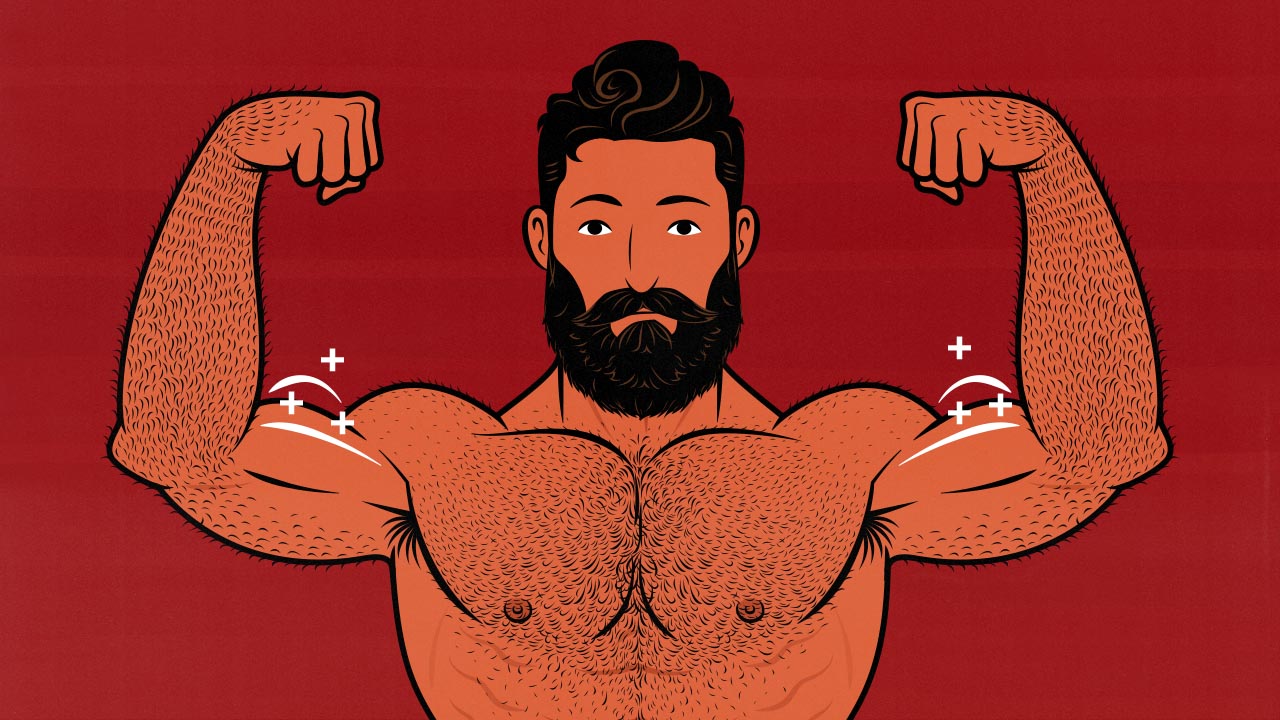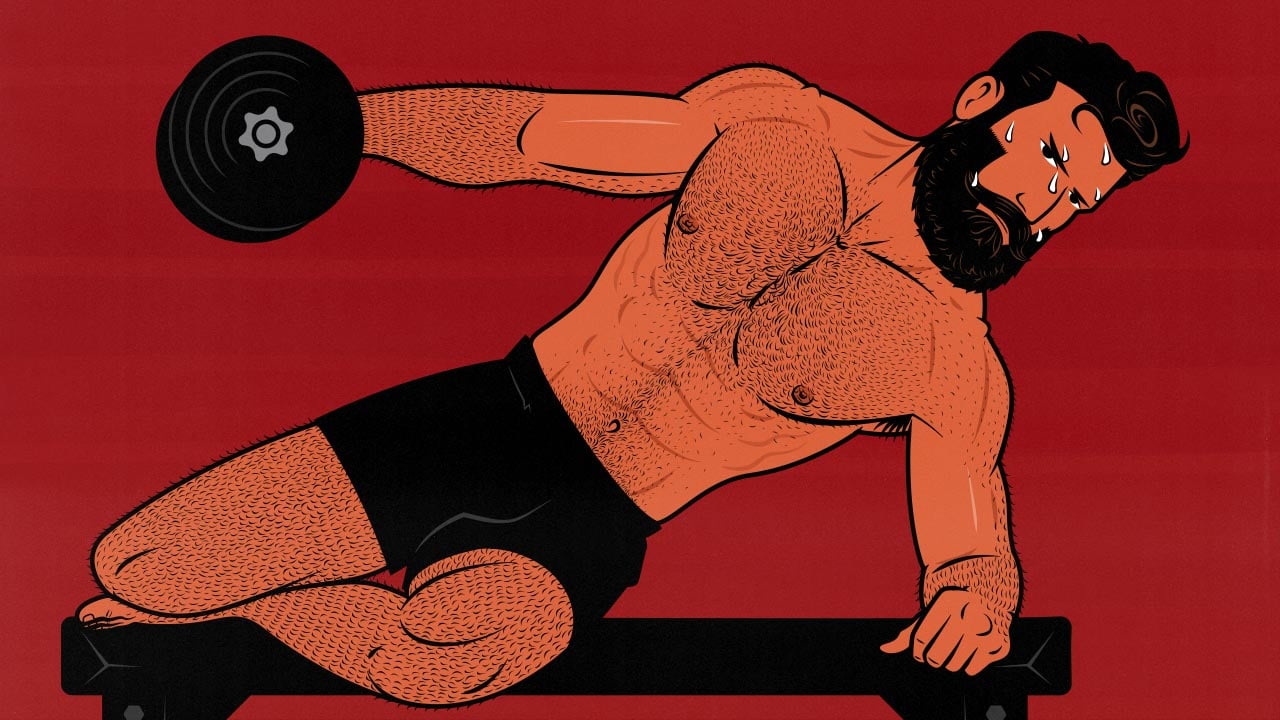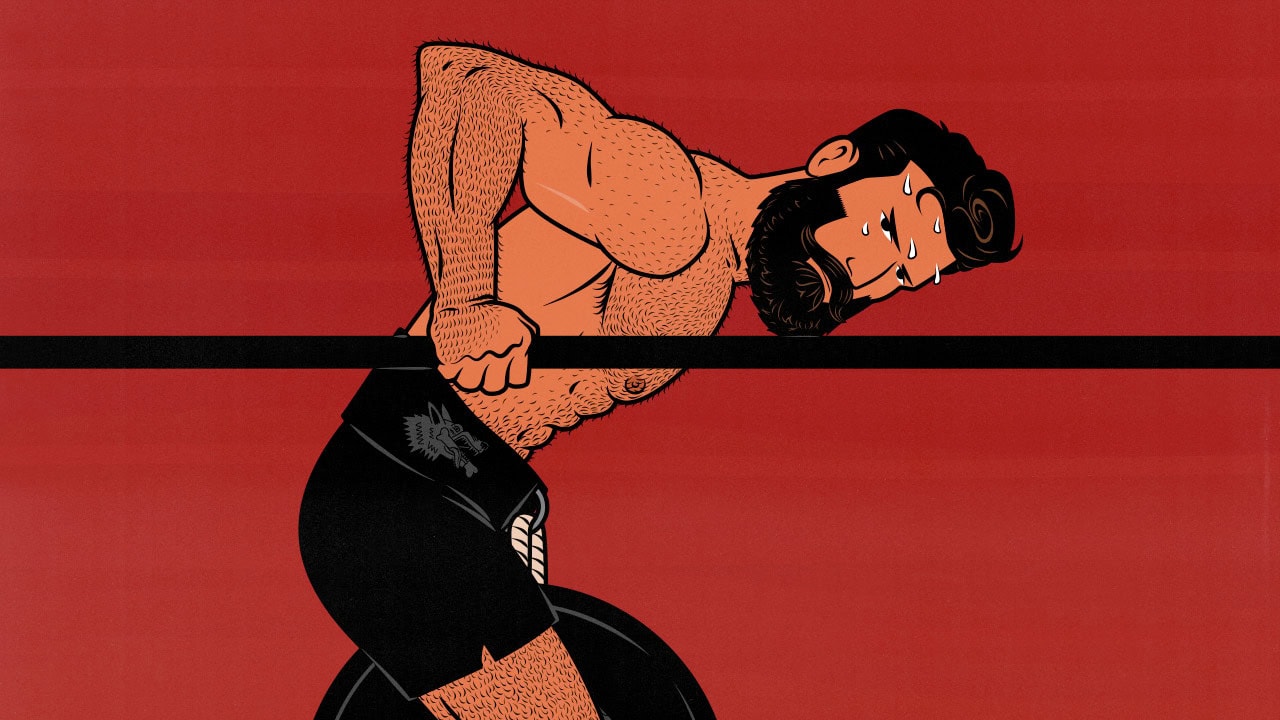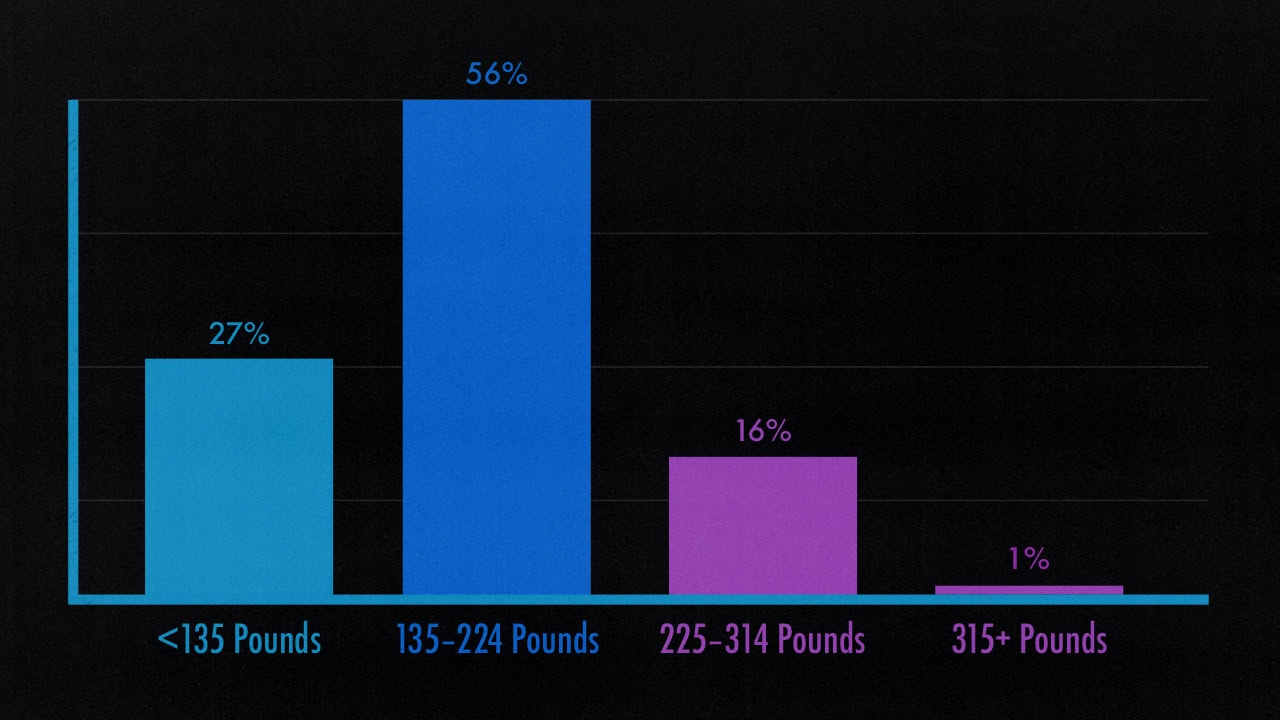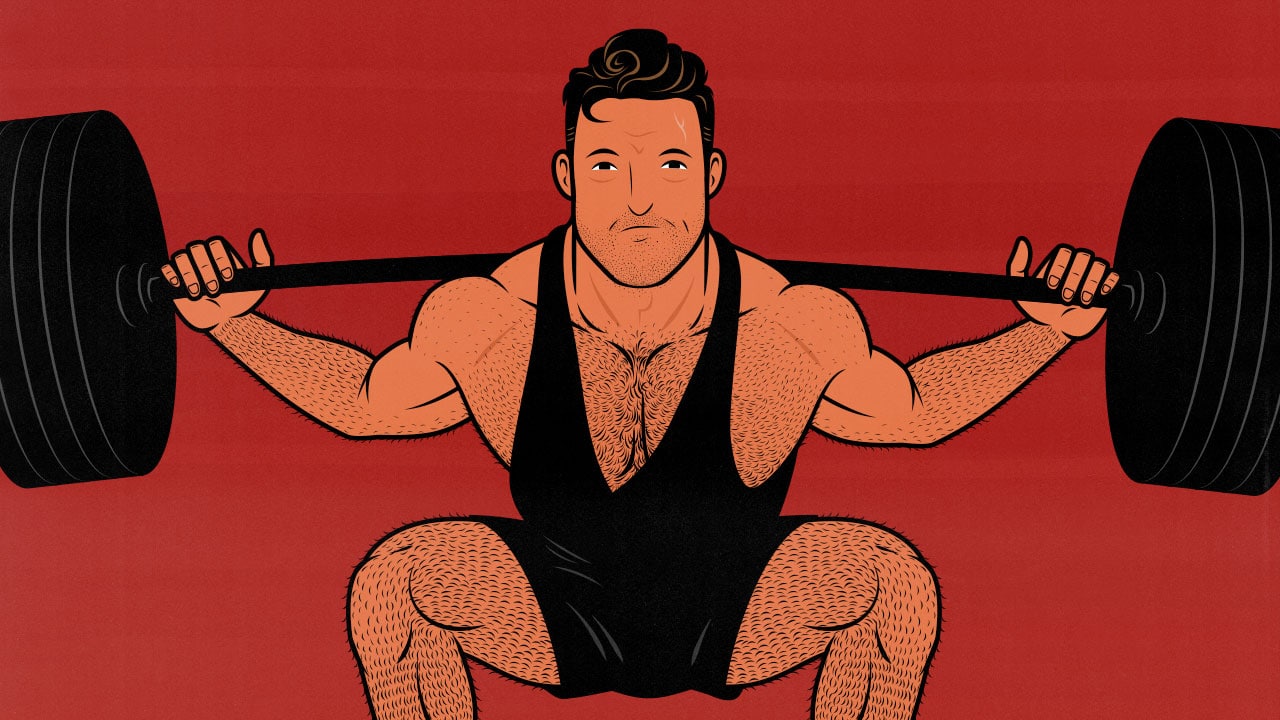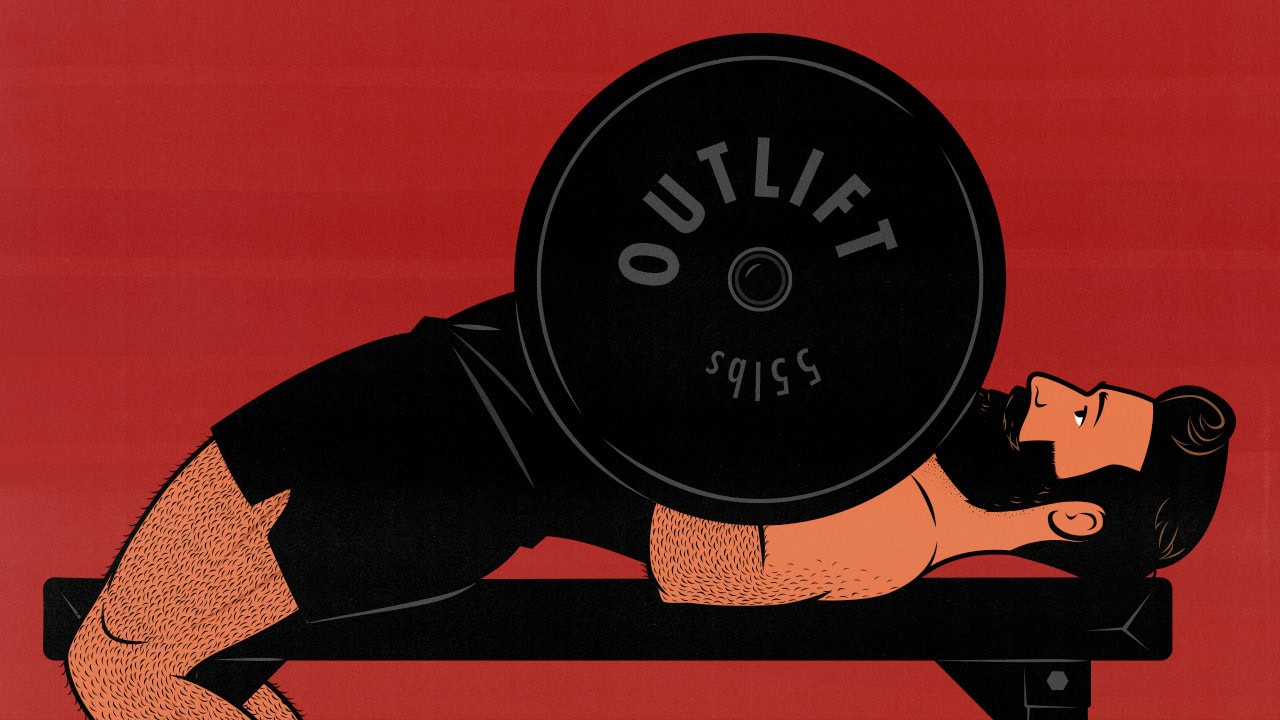Articles
The Best Long Head Biceps Exercises
The main function of your biceps is to flex your arms. That’s what biceps curls are for. But the long head of your biceps also helps to stabilize the shoulder joint, meaning:
- Regular dumbbell, barbell, and cable biceps curls train the long head just fine. There’s no movement at the shoulder joint, so there’s no problem.
- Drag curls, chin-ups, pull-ups, and rows have too much movement at the shoulder joint, preventing the long head from working properly.
- Exercises that keep your elbows behind your body train the long head at longer muscle lengths, which is fantastic for building muscle (full explanation).
- Exercises that keep your elbows in front of your body train the long head at shorter muscle lengths, which isn’t very good for building muscle.
- Exercises that are hard at the bottom are better for building muscle than exercises that are harder at the top (full explanation).
If you want to keep it simple, keep doing regular biceps curls (tutorial video). They’re great for both the short and long heads of your biceps. It doesn’t have to be more complicated than that.
But we can go deeper. If you bring your elbows behind your body and challenge your biceps at the bottom of the range motion, the long head of your biceps will get a tremendous muscle-building stimulus. There are two exercises that take advantage of that.
Delve into the detailsFull-Body Workouts vs Splits: Which Builds More Muscle?
A new meta-analysis by Ramos-Campo gathered together all fourteen studies comparing full-body workout routines against split workout routines. This is the latest study, and it includes all of the previous ones, so it’s the best evidence we have.
- Full-body workouts train most of your muscles every workout. They’re usually done three days per week, but they can be done as many as five days per week. People like them because they’re more efficient. The downside is that they’re harder. It’s harder to train more muscles per workout.
- Split workouts “split” your body up into different muscle groups. They’re usually done four, five, or six days per week. You could have a Push Day, Pull Day, and Leg Day (Push/Pull/Legs). Maybe you add an Arm Day and Shoulder Day (Bro Split). Or maybe you alternate between upper-body workouts and lower-body workouts (Upper/Lower). People like these splits because you get to train more often without needing to train sore muscles. The workouts are also easier. The downside is that they’re less efficient.
The results show that full-body and split routines both stimulate the same amount of muscle growth (and strength gains). Sometimes, the results lean one way, flirting with statistical significance, but that wasn’t the case here. It really didn’t seem to make any difference at all. Sort of. There’s a catch.
Delve into the detailsLong-Muscle-Length Training (Aka Stretch-Mediated Hypertrophy)
For at least a few decades, bodybuilders have favoured exercises that challenge their muscles at long muscle lengths. “Go deep! Feel the stretch!” The mechanisms weren’t known, and the results weren’t proven, but it seemed that lifting through a deeper range of motion stimulated more muscle growth.
Similarly, 90’s bodybuilders like John Parillo and then Dante Trudel were advocates of “extreme stretching,” where you hold the very bottom position of your exercises, challenging your muscles under a deep stretch.
Now, the research is catching up, and the results are even more dramatic than anyone expected. A systematic review of 26 studies found that holding the bottom position of an exercise stimulates nearly three times as much muscle growth as holding the top position.
This tells us that the bottom position of a dumbbell fly (with your chest stretched) stimulates more muscle growth than holding the top position of a cable crossover (with your chest contracted).
Since then, dozens of other studies have come out showing that long-muscle-length training stimulates far more muscle growth than short-muscle-length training. More controversially, it often stimulates slightly more muscle growth than training through a full range of motion.
So, let’s talk about how to train your muscles at long muscle lengths.
Delve into the detailsHow to Do Dips (And Why They’re So Good)
Dips are one of the best exercises for building a bigger chest, and they’re one of the best muscle-building exercises overall. They’re an older exercise than the bench press, and they’ve helped build some of the most iconic physiques of all time, including Arnold Schwarzenegger’s, Vince Gironda’s, and Larry Scott’s. They’re even more popular with gymnasts and callisthenics athletes for their ability to build upper body strength and mobility.
Dips aren’t quite as popular with bodybuilders anymore, perhaps because people lost their ability to work their shoulders through a deep range of motion. Myths spread about them being bad for our shoulders, but the opposite is true: dips are one of the best ways to build stronger, more stable, and more flexible shoulders.
The trick is to ease your way into them gradually. I’ll show you how.
Delve into the detailsIs 225 a Good Bench Press? What Percentage of Men Can Do It?
A few years ago, Greg Nuckols asked his Stronger by Science readers how long they’d been strength training and how much weight they could bench press. He found that the average powerlifter could bench 185 pounds within his first three months and 225 pounds within his first year (article).
But the sport of powerlifting tends to attract unusually strong guys. Many of those guys have athletic backgrounds. And the ones most likely to stick with powerlifting are the ones who see early success with it. Plus, many aren’t natural.
I’ve noticed that most lifters I talk to haven’t ever benched 225 pounds, and I almost never see guys loading two plates on the bar at the gym.
So, I surveyed 585 of our newsletter subscribers. I also asked the Stronger by Science community how often they see other guys benching 225 pounds.
Delve into the detailsHow Much Should You Be Able to Squat?
The common strength goal for natural lifters is to overhead press two plates, bench press three plates, squat four plates, and deadlift five. That’s a 405-pound squat. 180 kilos.
Those are lofty goals, and I don’t doubt you could do it. Many natural powerlifters do, but most casual lifters never get there, even after decades of training.
We surveyed 580 of our readers to see how long they’d been lifting and how much they could squat. Squatting three plates (315 pounds) is rare at commercial gyms. Most guys never get past two plates (225 pounds).
We can break the data down even further, giving you realistic expectations about how much you should be able to squat based on how long you’ve been training. I also made graphs so that you can see what percentile you’re in.
Delve into the detailsHow Much Should You Be Able to Overhead Press?
The common strength standard for natural lifters is to overhead press two plates, bench press three, squat four, and deadlift five. That’s a 225-pound overhead press. 100 kilos.
That seemed high to me, so I surveyed 580 guys from our newsletter. It turns out that if you can lift 135 pounds overhead, you’re stronger than most guys who have been lifting all their lives.
A 225-pound overhead press is even more impressive. Even among the guys who have been lifting for over a decade, only 2% of them have ever pressed 225 pounds overhead.
In the rest of the article, I’ll break it down by year, giving you realistic rates of progress. By all means, blow past them. If you train your press like a powerlifter trains his squat, I bet you can get 225 pounds within a few years.
Delve into the detailsHow Much Should You Be Able to Deadlift?
The typical goal for a natural lifter is to bench three plates, squat four, and deadlift five. That’s 495 pounds (or 220 kilos). I think that’s realistic, in theory, but most people never even make it to three plates, let alone four, and never even see anyone deadlift five.
We surveyed 540 guys from our newsletter. Most started off deadlifting 95–135 pounds for a few reps. After a couple of years of lifting weights, most could deadlift 225–315 pounds, at which point they plateaued forever. Only around half of us ever load 315 on the bar.
Deadlifting four plates is rare, impressive, and takes quite a bit of structured effort, especially if you’re naturally thin. I suspect your genetic limit is closer to five plates, but most of the people who make it all the way there are powerlifters who weigh over 200 pounds.
Delve into the detailsHow Much Should You Be Able to Bench Press?
We surveyed 580 guys from our newsletter. Most guys start off benching less than 135 pounds. After a year of lifting weights, they can bench 135–224 pounds, which is the weight they plateau at forever. Most guys never load two plates on the bar.
We aren’t the only ones struggling to put up 225. Jared from Outlive pointed out that guys in elite tactical units, such as SWAT teams, bench 220 pounds on average (article).
That doesn’t mean you can’t bench 225. I think you can. I suspect your genetic limit is closer to three plates. But a two-plate bench is quite good, and it requires quite a bit of structured effort, especially if you’re naturally thin.
Delve into the detailsAre Pre-Workout Supplements Bad for You? (Full Breakdown)
Pre-workout supplements have had their share of controversies. Think of a crazy professional bodybuilder using all kinds of performance-enhancing drugs. Now imagine the stimulants that guy might be interested in. And then imagine him as the CEO of a supplement company. It’s easy to imagine how they might make a pre-workout that’s bad for you.
When I first started lifting, my favourite pre-workout was SuperPump by Gaspari Nutrition. Gaspari Nutrition was founded by Rich Gaspari, a professional bodybuilder. He got into trouble for secretly spiking his supplements with PEDs. He got sued and filed for bankruptcy, and the company is now a ghost of what it once was.
Jack3d was the other popular pre-workout. It was pulled from the shelves after a marathoner died with it in her water bottle. Her death was blamed on the ingredient that gave Jack3d its edge: DMAA, which is somewhat similar to meth. People loved it, but you’d be hard-pressed to argue it was healthy.
There are still enhanced bodybuilders running popular supplement companies, and they’re still doing shady things. For example, More Plates More Dates and Greg Doucette both recently got caught selling fake turkesterone. That isn’t the same as secretly spiking supplements with banned ingredients, but it’s not a good sign.
However, most pre-workouts are made by big corporations and marketed to the masses. The ingredients are tame, and the tubs probably contain what’s on the label. Are those pre-workouts bad for you?
Delve into the details
